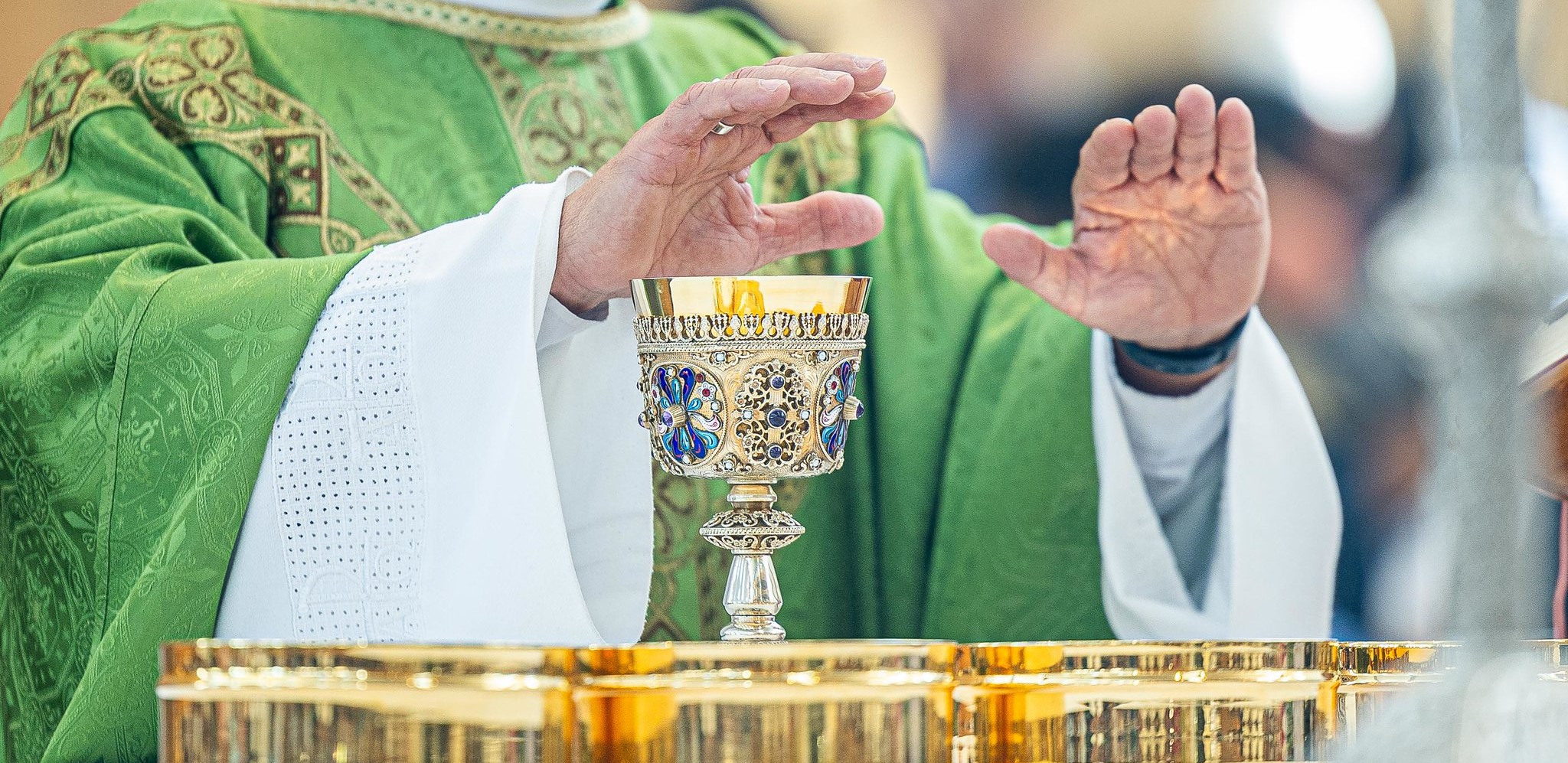The Eucharistic Prayer - Part II
National Liturgical Council

A Very Ancient Prayer
Prior to the liturgical reforms following the Second Vatican Council, there was only one Eucharistic Prayer in use. This prayer is known as the Roman Canon. The word ‘canon’ actually means a ‘rule’, so the Roman Canon was the ‘'correct way’ if you like, to pray the Eucharistic Prayer. We know from early Church documents that those who presided at the Eucharist at first made up their own Eucharistic Prayers. By the second century it was clear that there needed to be some uniformity in the structure and content of this prayer.
The Roman Canon is very old, parts of which date from the third and fourth century. Each local church had their own Eucharistic Prayer at first, but over time the Western Church (of which we are part) came to accept the Roman Canon as the one to pray.
New Choices
When the new Roman Missal was authorised after Vatican II, the compilers gave the Church other Eucharistic Prayers that could be used besides the Roman Canon (Eucharistic Prayer No.1). Now we have a second, third and fourth Eucharistic Prayer in the main part of the Missal, as well as two Eucharistic Prayers for Reconciliation, three for Masses with Children and more recently, four Eucharistic Prayers for Masses for Various Needs and Occasions.
The Shape and Content
We have seen that the Preface expresses thanksgiving and concludes with the acclamation, ‘Holy, holy.’ The rest of the Eucharistic Prayer contains the following parts:
† An epiclesis (calling on God’s Spirit to consecrate the bread and wine to become the body and blood of Christ).
† The institution narrative, which recalls the words and actions that Christ used at the Last Supper.
† The Memorial Acclamation where we proclaim our faith in Christ, and which should be sung. There are four choices for Sundays, and we should sing the one that best fits the occasion or season.
† What follows then is the anamnesis. This too is a Greek word like epiclesis. It is really keeping the memorial of Christ’s passion, resurrection and ascension, but it is more than just remembering. It is actually making present those events in the life of Christ so that the assembly of God’s people might be joined to, and receive the benefits of what is called the Paschal Mystery.
† There is also an element of offering. The Church now gathered "offers in the Holy Spirit the spotless Victim to the Father. The Church’s intention, however, is that the faithful not only offer this spotless Victim but also learn to offer themselves and so day by day to be consummated, through Christ the mediator, into unity with God and with each other, so that at last God may be all in all" (GIRM 79).
Intercessions Again?
The Eucharistic Prayer also has some intercessions, but these are not like the Prayer of the Faithful. These intercessions are about celebrating in communion with the entire Church of heaven and earth, as Eucharistic Prayer No. 4 says, "… those here present and all your people, and all who seek you with a sincere heart."
A Great Finish!
The Prayer concludes with a final Doxology (prayer of praise to God). This Doxology “…Through him, with him, in him,…” is reserved for the presiding priest and is better sung since it leads the entire assembly into the Great Amen. This Amen should always be sung because it is the people’s confirmation of all that has been proclaimed on their behalf.
There are some wonderful musical compositions for the Great Amen, helping us express our joy as we end the Eucharistic Prayer in the way it began, giving praise to God.
This article was originally published in Let’s Walk Through The Mass. © Diocese of Parramatta. 1999, 2000, 2007. Reprinted with permission.
